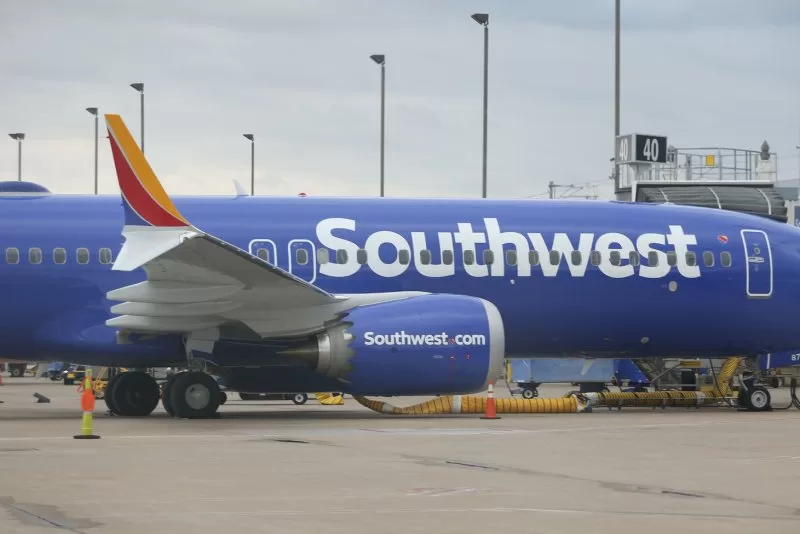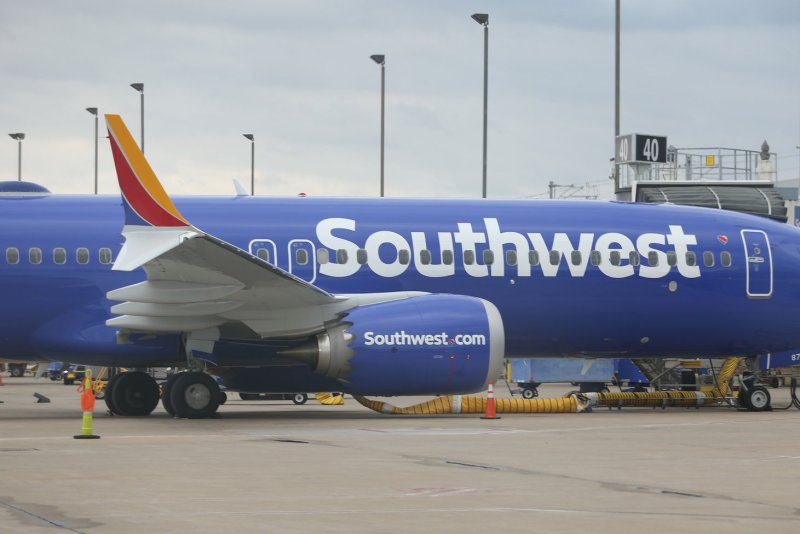1 of 4 | Southwest Airlines is ending in-flight service earlier than it previously did in an effort to reduce the risk of injury to its cabin crews. File Photo by Bill Greenblatt/UPI |
License Photo
Nov. 30 (UPI) — Southwest Airlines is ending in-flight service earlier than it previously did in an effort to reduce the risk of injury to its cabin crews.
The low-cost carrier based in Dallas confirmed the news this week, that its cabin crews will end service and begin preparation for landing when flights reach an altitude of 18,000 feet.
The rule change is expected to go into effect Wednesday.
Southwest flight crews had previously begun landing preparations at 10,000 feet.
The change is to make things safer for the airline’s cabin crews and reduce the risk of turbulence-related injuries, meaning seats will need to be in their upright position, tray tables locked and luggage stowed earlier.
“The change in procedures is designed to reduce the risk of in-flight turbulence injuries for our Crew Members and Customers. It is the result of the airline’s close collaboration with its Labor partners and a robust approach to Safety Management,” Southwest said in a statement to USA TODAY.
“Nothing is more important to Southwest Airlines than the Safety of our Customers and Employees.”
The 53-year-old airline operates more than 800 aircraft, exclusively made up of different variants of the Boeing 737, making it the world’s fourth-largest commercial fleet.
Turbulence aboard flights has garnered significant public attention, although the airline did not say it was making the change in response to one specific incident.
“The evaluation of thousands of data points from Flight Attendant and Pilot reports paired with information from the Flight Data Analysis Program, confirmed that seating our Flight Attendants earlier should reduce Flight Attendant injuries by at least 20%,” Southwest said in an internal memo to employees, obtained by View From The Wing.
“Inflight and Flight Ops will validate the effectiveness of these new procedures, and if we do not achieve the desired result, we will continue to find solutions. We are also committed to sharing updates on these findings periodically.”
In July, “strong” turbulence injured several passengers aboard an Air Europa flight from Spain to Uruguay.
The following month, a United Airlines flight had to divert and make an emergency landing in Tennessee after seven people were hurt when turbulence struck over Louisiana.

